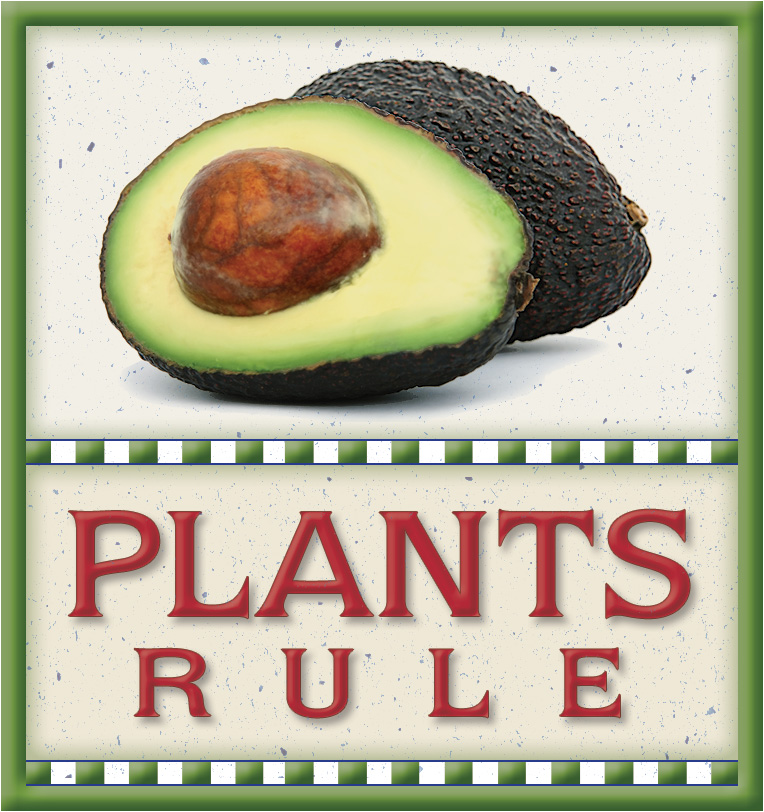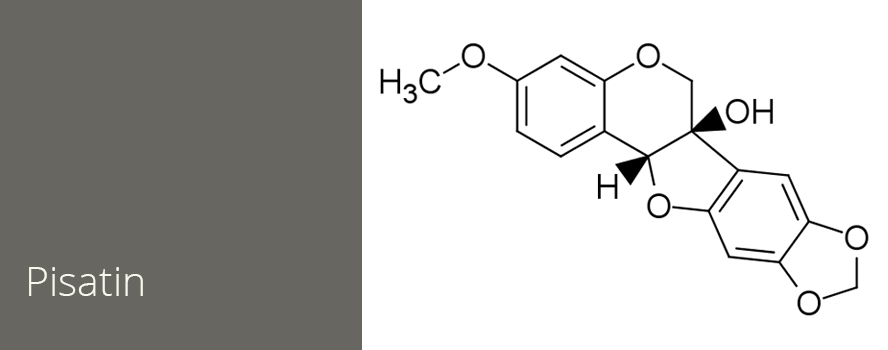Illustration by R.C. Fleming
Plants Produce Chemicals as a Defense Against Pathogens
by Helga George, Ph.D.
Plants produce an array of secondary metabolites, totaling many thousands of phenolic compounds alone. While many of these molecules have functions in primary plant metabolism, others have been shown to protect plants against attack from both pathogens and herbivores. These low molecular weight compounds are considered to be members of two classes of plant defense compounds against pathogens based on whether they are induced after attack or are present all the time. Those produced after infection are known as phytoalexins, while those that are ever-present were known as preformed inhibitors, but are currently known as phytoanticipins.
Phytoalexins are Inducible Defenses Against Plant Pathogens
Many plant antimicrobial compounds are not produced by the host until the pathogen has initiated its infection. This signals the host to begin producing toxic chemicals. Phytoalexins are active against both fungi and bacteria, but not viruses. Many pathogens have evolved defenses against these chemicals and can detoxify them. This enables specific pathogens of a plant to overcome the plant’s defenses and cause disease.
A variety of classes of chemical compounds comprise this class of inducible defense molecules, including terpenoids, alkaloids, and phenolic compounds such as isoflavonoids. One of the model systems that has been highly studied is the pea antibiotic pisatin, an isoflavonoid which is toxic to a large number of fungi that are not pathogens of this plant.
Some Fungi Detoxify Their Host’s Phytoalexin
Many fungi that are pea pathogens produce the enzyme pisatin demethylase to detoxify the compound. Different genera of these fungi have been shown to produce highly specific, but biochemically different cytochrome P450 enzymes that make pisatin non-toxic to the fungi. As described in Fungal Genetics and Biology, this suggests that fungal pathogens of pea have separately evolved highly specific P450s to detoxify pisatin. P450s are common detoxification enzymes widespread in plants, animals, and bacteria.
More recently, substantial work has been done with the plant model system Arabidopsis thaliana, which is amenable to molecular genetic manipulation (International Journal of Molecular Sciences). It produces the phytoalexin camalexin, an indole alkaloid antimicrobial compound that protects this and related species against certain fungi. Mutants of the plant that do not produce the phytoalexin become susceptible to pathogens to which they previously were resistant. As is the case with pisatin and pea, certain pathogens of A. thaliana are able to detoxify camalexin.
Phytoanticipins are Constitutively Present in Plants and Require Activation
In contrast to antimicrobial compounds whose production is induced after infection, phytoanticipins are always present in the plant. This distinction was delineated in Plant Cell. These pre-existing molecules can be found in various locations, such as on the plant’s surface. A common site for these chemicals is the vacuole, a large cellular structure in which compounds are stored until needed. Often, such molecules have a sugar attached to them and are known as glycosides. They remain inactive until the sugar is cleaved off. This enzymatic activity is often induced by attack by the pathogen.
Many phytoanticipins are steroid or sterol glycoalkaloids. These plant defense compounds are known as saponins. One example is the tomato compound α-tomatine. Certain fungal pathogens are able to degrade this molecule to a less toxic form. Its role in the virulence of fungi is open to some debate, since fungal mutants that have been genetically engineered to not produce the degradative enzyme tomatinase can still cause disease.
Certain Plant Compounds can be a Phytoalexin and a Phytoanticipin Simultaneously
Since the distinction between phytoalexins and phytoanticipins is not based on chemical structure, but on function, it is possible for a plant to have the same molecule function in a dual manner. For instance, red clover produces the isoflavonoid (+)maackiain, which is toxic to many fungi. This compound is both inducible as a phytoalexin, yet is found constitutively stored bound to a sugar in the roots. During the disruption of tissue, a plant enzyme cleaves off the sugar, releasing the stored (+)maackiain.
Plant Chemical Defense is Highly Complex
Due to the huge number of low molecular weight secondary metabolites produced by plants and the variety of ways in which they can exert effects, it is a difficult endeavor to study the chemical defenses of plants. Both inducible and constitutive defenses exist. Yet the same molecule can serve both functions in the same plant. Despite the wealth of knowledge in this field, scientists have only scratched the surface of understanding the details of these complex events.
References:
Bednarek, P. and A. Osbourn (2009). Plant-microbe interactions: chemical diversity in plant defense. Science, 324:746-748.
George, H.L. and H.D. VanEtten (2001). Characterization of pisatin-inducible cytochrome P450s in fungal pathogens of pea that detoxify the pea phytoalexin pisatin. Fungal Genetics and Biology, 33:37-48.
González-Lamonthe, R., G. Mitchell, M. Gattuso, M.S. Diarra, F. Malouin, and K. Bouarab (2009). Plant antimicrobial agents and their effects on plant and human pathogens. International Journal of Molecular Sciences, 10:3400-3419.
VanEtten, H.D., J.W. Mansfield, J.A. Bailey, and E.E. Farmer (1994). Two classes of plant antibiotics: phytoalexins versus “phytoanticipins.” Plant Cell, 6:1191-1192.
QUICK LINKS TO ALL
Suite.io Articles
by Helga George, Ph.D.
AGRICULTURAL SCIENCE
• Polyphenol Oxidase Enzymes Cause Browning of Fruits and Vegetables
CHEMICAL ECOLOGY
• Domoic Acid Poisoning in Sea Lions
• Insects that Make Cyanide
PLANT PATHOLOGY
• Plants Produce Chemicals as a Defense Against Pathogens
• Wheat Rust Threatens World’s Wheat Crops
• Biotrophic Versus Necrotrophic Fungi
• Fungal Haustoria Absorb Nutrients from Living Plant Cells
• The Gene-for-Gene Concept: a Central Tenet in Plant Pathology
GARDENING
• Oenothera speciosa—a Drought Tolerant Perennial Groundcover
• The Magic Lily—a Drought Tolerant Species of Lycoris
SOIL MICROBIOLOGY
• Streptomyces, Antibiotics, and Microbial Conflict in the Soil
AGRICULTURE IN SANTA BARBARA COUNTY
• Chrysanthemum White Rust Outbreak in Southern California

